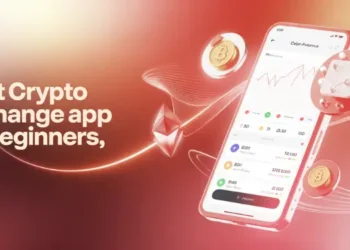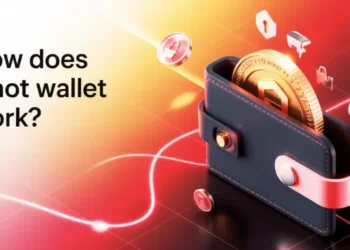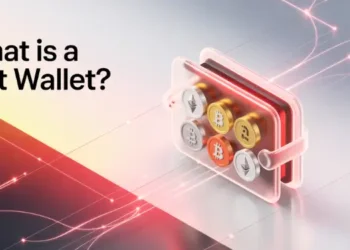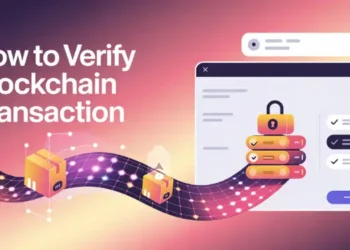When you choose crypto exchange 2025 platforms, consider security, fees, regulations, and features across centralized, decentralized, and hybrid options. Did you know that over 500 crypto exchanges exist globally, making selection crucial for your trading success?
By 2025, regulatory compliance will be the top factor when choosing an exchange, with MiCA and SEC oversight shaping the landscape. Which exchange type best matches your trading needs and risk tolerance?
Starting January 2025, Crypto Asset Service Providers (CASPs) must begin applying for licenses to operate within the EU, with compliance deadlines falling between December 30, 2025, and June 30, 2026, depending on their location. Ref.: “Chainup. (2025). MiCA Compliance Guide 2025: Regulated Crypto Finance Era. Chainup Blog.” [!]
Key Takeaways:
- Regulatory compliance is the top priority.
- Hybrid exchanges balance security and usability.
- Always compare layered fee structures critically.
- Prioritize exchanges with robust custody solutions.
- Layer-2 integration essential for cost efficiency.
- Tokenized real-world assets expand investment options.
Understanding Exchange Types
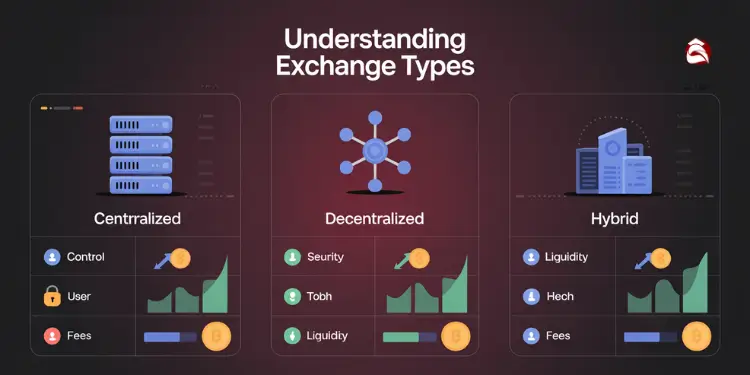
Crypto exchanges come in three main forms: centralized, decentralized, and hybrid. Each type offers distinct advantages in security, control, and user experience.
| Exchange Type | Control | Security | User Experience | Liquidity | Fees |
|---|---|---|---|---|---|
| Centralized | Exchange holds funds | Platform-dependent | Beginner-friendly | High | Higher |
| Decentralized | User maintains control | User-controlled | Technical knowledge needed | Variable | Lower |
| Hybrid | Shared control | Enhanced security | User-friendly | Good | Moderate |
Centralized vs. Decentralized Exchanges
The choice between centralized and decentralized platforms depends on your priorities for control, security, and convenience.
| Feature | Centralized Exchanges | Decentralized Exchanges |
|---|---|---|
| Control | Exchange holds funds | User maintains control |
| Security | Platform-dependent | User-controlled |
| User Experience | Beginner-friendly | Technical knowledge needed |
| Liquidity | High | Variable |
| Fees | Higher | Lower |
Hybrid Exchanges: The Best of Both Worlds

Hybrid exchanges represent an innovative approach that combines the security benefits of decentralized platforms with the user-friendly features and liquidity of centralized exchanges. These platforms aim to bridge the gap between both worlds, offering traders enhanced control while maintaining accessibility.
- Nash – Combines decentralized security with centralized speed, offering fiat on-ramps and regulatory compliance
- Qurrex – First hybrid exchange with both centralized order book and decentralized settlement
- Eidoo – Hybrid wallet and exchange platform focusing on user-friendly crypto management
- Bitgur – Offers hybrid trading with advanced analytics and market data integration
- DX.Exchange – Combines traditional finance with crypto through tokenized stocks and digital assets
Anticipate upcoming regulations and compliance shifts
Staying informed about upcoming regulations is crucial for choosing the best crypto exchange. As regulatory bodies like the Securities and Exchange Commission (SEC) and the European Union with MiCA (Markets in Crypto-Assets) increase their scrutiny of the crypto market, exchanges must demonstrate compliance. Selecting a crypto platform that proactively adheres to evolving legal standards ensures your digital assets are protected and that you can trade crypto with confidence. These also determine what crypto assets can be traded.
Evaluate emerging layer two integration support
Layer two solutions like the Lightning Network and rollups are revolutionizing blockchain scalability by enabling faster, cheaper transactions. The best crypto exchanges actively integrate these technologies to enhance user experience, with Lightning Network compatibility proving essential for Bitcoin transactions and rollup support critical for Ethereum and altcoin trading. These integrations significantly reduce congestion on main networks while maintaining security.
Lightning Network enables instant and low-cost Bitcoin transactions through bidirectional payment channels, while rollups (Optimistic and zkRollups) batch multiple Ethereum transactions into single on-chain submissions, significantly reducing gas costs and increasing throughput. Ref.: “Vezgo. (2025). Layer 2 Scaling Solutions: Definition, Types, and Examples. Vezgo Blog.” [!]
Check lightning network and rollup compatibility
Layer two solutions, such as the Lightning Network and rollups, are designed to enhance the scalability and efficiency of blockchain networks. The best crypto exchanges will actively integrate these technologies to offer faster and cheaper transactions. Checking for Lightning Network compatibility, especially for bitcoin transactions, and rollup support for Ethereum and other altcoins can significantly improve the user experience, especially if looking for instant crypto exchange.
Review gasless deposit and withdrawal options
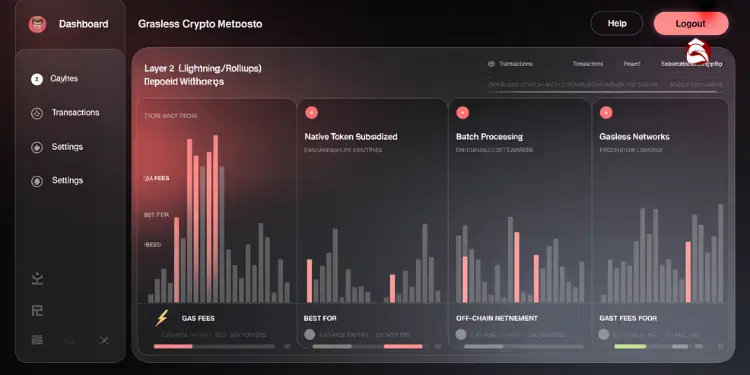
Gasless transactions eliminate the burden of network fees, making crypto trading more accessible and cost-effective. Leading exchanges now offer innovative solutions that absorb or bypass gas fees, particularly beneficial for frequent traders and those moving smaller amounts. These options leverage Layer 2 technologies or subsidized fee structures to provide seamless transactions without compromising on speed or security.
| Deposit/Withdrawal Option | Gas Fees | Speed | Best For | Exchange Examples |
|---|---|---|---|---|
| Layer 2 (Lightning/Rollups) | None/Minimal | Instant | Frequent small transactions | Binance, Kraken |
| Native Token Subsidized | Reduced | Fast | Regular traders | Coinbase, KuCoin |
| Batch Processing | None | Moderate | Large volume transfers | Bitfinex, Huobi |
| Off-Chain Settlement | None | Instant | Peer-to-peer transfers | Nash, Eidoo |
| Gasless Networks | None | Fast | Cost-conscious users | Polygon, Arbitrum |
Gasless transactions enable users to interact with smart contracts without needing to hold native tokens for gas fees, utilizing third-party relayers who pay transaction costs and are reimbursed by the recipient contract, significantly improving user onboarding experience. Ref.: “OpenZeppelin. (2025). Sending gasless transactions – OpenZeppelin Docs.” [!]
Compare advanced trading tools and automation
Modern crypto traders demand sophisticated tools to execute strategies efficiently and capitalize on market opportunities. Leading exchanges differentiate themselves through their advanced trading features and automation capabilities, catering to both technical analysts and algorithmic traders seeking precision and efficiency in their trading operations.
| Feature | Coinbase Pro | Binance | Kraken | Bitfinex | KuCoin |
|---|---|---|---|---|---|
| Advanced Charting | Basic | Professional | Professional | Professional | Professional |
| Order Types | Basic | Advanced (Limit, Stop, OCO) | Advanced (Limit, Stop, Trailing) | Advanced (All types) | Advanced (Limit, Stop, OCO) |
| API Access | Limited | Full REST/WebSocket | Full REST/WebSocket | Full REST/WebSocket | Full REST/WebSocket |
| Trading Bots | No | Yes (Grid, DCA) | Limited | Yes (Custom) | Yes (Grid, DCA, Martingale) |
| Real-time Data | Basic | Comprehensive | Comprehensive | Comprehensive | Comprehensive |
| Paper Trading | No | Yes | Yes | Yes | Yes |
| Custom Indicators | Limited | Yes | Yes | Yes | Yes |
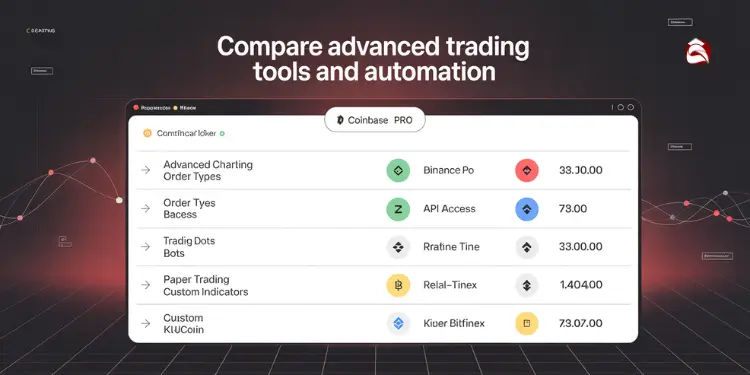
Review multichain liquidity aggregators partnerships
Liquidity is the lifeblood of any cryptocurrency exchange. Multichain liquidity aggregators consolidate liquidity from various crypto exchanges and decentralized exchanges, providing users with the best possible prices and reducing slippage. Crypto exchanges that partner with these aggregators enhance the trading experience, ensuring that orders are filled quickly and efficiently. This becomes critical when dealing with altcoins that might not have the same trade crypto volume as major coins. This can affect the exchange rates.
Investigate cross exchange routing incentives
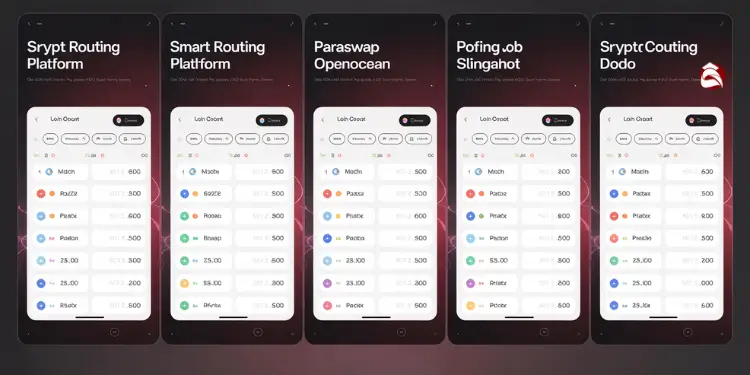
Cross-exchange routing technology automatically directs trades across multiple exchanges to secure the best possible prices and lowest fees, maximizing trader profitability. This intelligent order routing system analyzes real-time market conditions across platforms, splitting orders when necessary to minimize slippage and take advantage of price discrepancies between exchanges.
| Platform | Routing Mechanism | Fee Structure | Supported Exchanges | Smart Order Splitting | Min. Order Size |
|---|---|---|---|---|---|
| 1inch | Pathfinder Algorithm | Gas fee + 0.3% | 100+ DEXs | Yes | No minimum |
| Matcha | 0x API | Variable (0-0.3%) | 50+ DEXs | Yes | $1 equivalent |
| ParaSwap | Multi-path routing | 0.15-0.3% | 30+ DEXs & CEXs | Yes | No minimum |
| OpenOcean | Intelligent routing | 0.2% | 20+ DEXs & CEXs | Yes | $5 equivalent |
| Slingshot | Aggregated liquidity | 0-0.2% | 15+ DEXs | Yes | $10 equivalent |
| DODO | Proactive Market Making | 0.2% | DODO pool + other DEXs | Yes | No minimum |
Analyze token listings driven by real assets

The tokenization of real-world assets (RWAs) represents a revolutionary bridge between traditional finance and blockchain technology, enabling fractional ownership of tangible assets like real estate, commodities, and equities. These digital tokens provide investors with exposure to physical assets while benefiting from blockchain’s transparency, efficiency, and accessibility, creating new opportunities for portfolio diversification and global investment access.
- PAXG – A gold-backed cryptocurrency where each token is redeemable for one fine troy ounce of London Good Delivery gold stored in professional vault facilities
- Ondo Finance – Tokenizes institutional-grade real-world assets including US Treasury bonds and corporate bonds, offering yield-generating opportunities
- Maple Finance – Provides access to institutional credit markets through tokenized loans and fixed-income products
- RealT – Enables fractional ownership of US real estate properties through blockchain-based tokens representing ownership shares
- Temple – Offers tokenized exposure to real-world assets including real estate and infrastructure projects
- Goldfinch – Decentralized credit protocol connecting crypto capital with real-world borrowers in emerging markets
- Centrifuge – Tokenizes real-world assets like invoices, real estate, and commodities, bringing them to DeFi for liquidity and yield
- Landshare – Real estate investment platform that tokenizes property ownership, allowing fractional investment in physical properties
“Related Topics: How to become blockchain developer essential skills“
Evaluate tokenization standards and custody safeguards
Tokenization standards, such as ERC-3643, ensure interoperability and security for tokenized assets. Custody safeguards are also vital, as they protect the underlying assets backing the tokens. Exchanges offering RWA listings should adhere to robust custody practices, either through their own secure crypto wallet solutions or partnerships with regulated custodians. These allow customers to buy or sell with confidence. This increases the appeal of the crypto app.
ERC-3643 protocol provides an open-source framework for permissioned token issuance with built-in decentralized identity (ONCHAINID), ensuring compliance at the smart contract level and enabling tokenization of over $32 billion in real-world assets. Ref.: “ERC3643 ASBL. (2025). ERC3643 – The Token Standard for RWA Tokenization. ERC3643.org.” [!]
Confirm oracle integrations ensuring price integrity
Oracles play a crucial role in maintaining the integrity of tokenized assets by providing real-time price feeds from reliable sources. Confirming that the exchange utilizes reputable oracle services is essential to prevent price manipulation and ensure accurate valuation of RWAs. Without solid oracle integrations, users face a greater risk when trading and the crypto assets can be less trustworthy. This allows you to trade crypto with peace of mind.
“Further Reading: Best blockchain books for beginners“
Comparing Fees Across Platforms
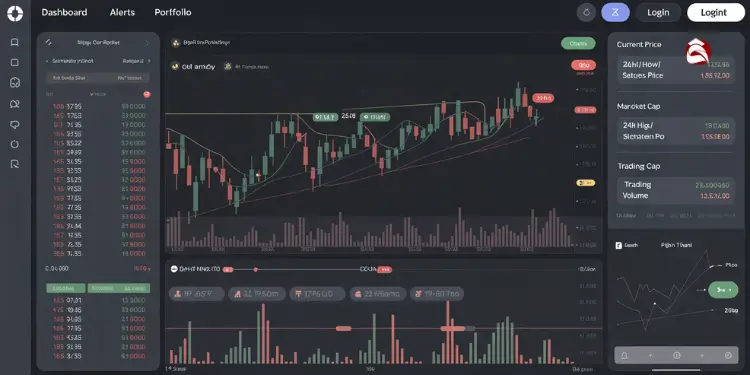
Fee structures vary significantly across cryptocurrency exchanges and can substantially impact trading profitability. Understanding the differences in trading fees, deposit costs, and withdrawal charges is essential for selecting the most cost-effective platform that aligns with your trading volume and frequency.
| Exchange | Maker Fee | Taker Fee | Deposit Fee | Withdrawal Fee | Fee Discounts |
|---|---|---|---|---|---|
| Binance | 0.1% | 0.1% | Free | Varies by crypto | 25% with BNB |
| Coinbase | 0.4% | 0.6% | Free (ACH) | Varies by crypto | Lower for Pro |
| Kraken | 0.16% | 0.26% | Free | Varies by crypto | Volume-based |
| KuCoin | 0.1% | 0.1% | Free | Varies by crypto | 20% with KCS |
| Bitfinex | 0.1% | 0.2% | Free | Varies by crypto | Volume-based |
| OKX | 0.08% | 0.1% | Free | Varies by crypto | Volume-based |
| Gemini | 0.2% | 0.35% | Free | Varies by crypto | Volume-based |
| Crypto.com | 0.075% | 0.075% | Free | Varies by crypto | Up to 90% with CRO |
| Huobi | 0.1% | 0.2% | Free | Varies by crypto | Volume-based |
| Bybit | 0.1% | 0.1% | Free | Varies by crypto | Volume-based |
| Gate.io | 0.1% | 0.1% | Free | Varies by crypto | Volume-based |
Understanding Trading Fees and Spreads
Trading fees are charged when you buy or sell cryptocurrencies on an exchange. These fees can be a percentage of the transaction value or a fixed fee per trade. Spreads, the difference between the buy and sell price of an asset, also represent a cost to the trader.
“You Might Also Like: Best blockchain tutorials for beginners“
Finding the Best Rates for Transactions
The most favorable transaction rates require strategic comparison and awareness of various factors that influence trading costs across different platforms. By understanding fee structures, market conditions, and available discounts, traders can significantly reduce their overall expenses and maximize their investment returns.
- Compare trading fees across multiple exchanges before executing large trades
- Utilize fee calculators provided by exchanges to estimate total transaction costs
- Take advantage of volume-based discounts by consolidating trading activity on preferred platforms
- Hold and use exchange-native tokens (like BNB, KCS, or CRO) to unlock fee discounts
- Time transactions during periods of lower network congestion to avoid elevated gas fees
- Use aggregation services like 1inch or Matcha to automatically find the best rates across decentralized exchanges
- Consider maker vs. taker fees and use limit orders when possible to qualify for lower maker rates
- Monitor withdrawal fee schedules and consolidate transfers when possible to minimize fixed costs
- Look for promotional periods with reduced or waived fees for specific trading pairs or deposit methods
- Factor in both trading fees and spreads when calculating the true cost of transactions
Comparing User Interfaces of Leading Exchanges
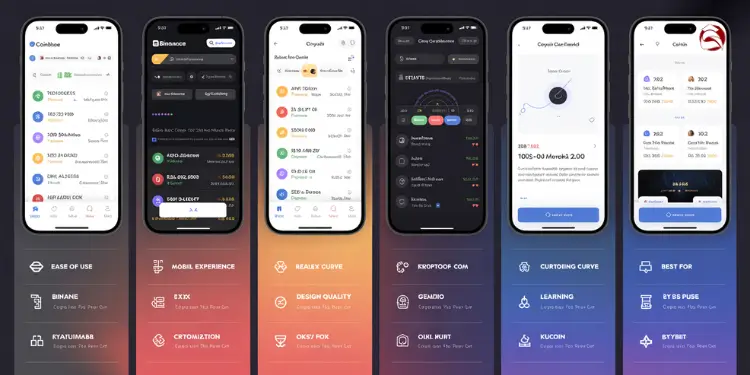
The user interface serves as the primary interaction point between traders and their chosen platform, significantly impacting trading efficiency and overall user satisfaction. A well-designed UI balances functionality with intuitiveness, catering to both beginners seeking simplicity and experienced traders demanding advanced features and customization options.
| Exchange | Ease of Use | Mobile Experience | Design Quality | Customization | Learning Curve | Best For |
|---|---|---|---|---|---|---|
| Coinbase | Excellent | Excellent | Clean & Modern | Limited | Very Low | Beginners |
| Binance | Moderate | Good | Feature-rich | High | Moderate | Advanced Users |
| Kraken | Good | Good | Professional | Medium | Low-Moderate | All Levels |
| Gemini | Excellent | Excellent | Sleek & Minimal | Low | Very Low | Beginners |
| Crypto.com | Good | Excellent | Modern & App-focused | Medium | Low | Mobile Users |
| OKX | Moderate | Good | Technical | High | Moderate-High | Professionals |
| KuCoin | Moderate | Good | Comprehensive | High | Moderate | Active Traders |
| Bybit | Moderate | Good | Trading-focused | Medium | Moderate | Derivatives Traders |
Advanced Trading Features: Margin, Futures, and Staking
Experienced crypto traders often seek advanced features like margin trading, futures contracts, and staking options. Margin trading allows users to leverage their capital, while futures contracts enable speculation on future price movements. Staking involves holding cryptocurrencies to earn rewards. A crypto platform that offers these options is more likely to attract experienced cryptocurrency traders. Not all exchanges offer futures trading for regulatory and legal compliance reasons.
Advanced trading features including margin trading with leverage up to 500x, futures contracts, and staking options require sophisticated risk management systems, substantial capital reserves, and compliance with evolving regulatory frameworks that vary significantly across jurisdictions. Ref.: “Debut Infotech. (2025). 10 Best Crypto Margin Trading Exchanges for 2025. Debut Infotech Blog.” [!]
“Related Articles: Blockchain certification for beginners choosing courses“
Mini-Profiles of Leading Platforms
Coinbase: Best for Beginners
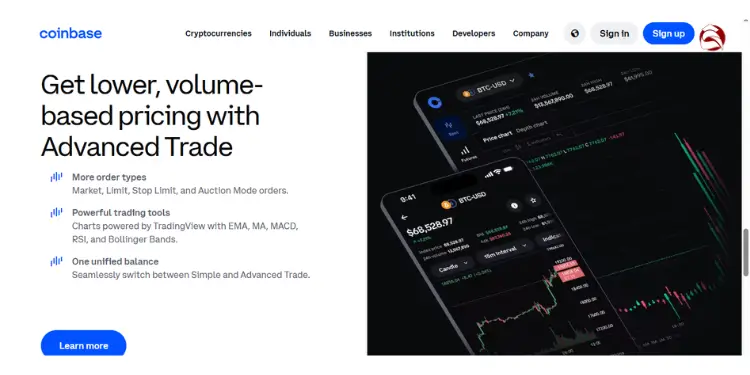
Coinbase is renowned for its user-friendly interface, making it the best crypto exchange for beginners. It offers a straightforward way to buy and sell cryptocurrencies, with a focus on ease of use and security. While its fees may be slightly higher than some competitors, Coinbase provides a reliable and regulated platform for those new to crypto. This is also great for learning to trade crypto.
Binance: Best for Advanced Traders
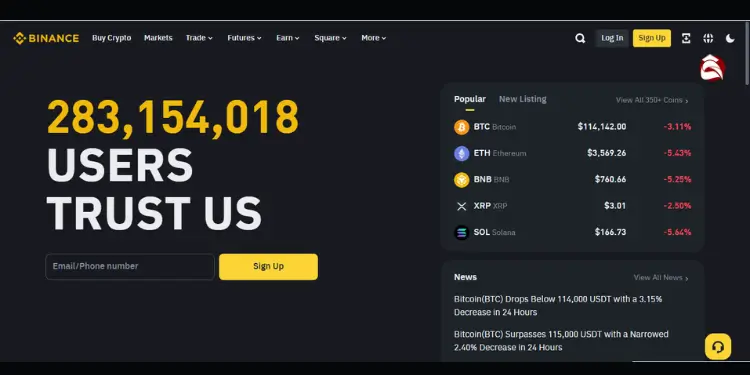
Binance is a global crypto exchange known for its extensive selection of crypto, advanced trading features, and low fees. It caters to experienced crypto traders with options like margin trading, futures contracts, and a wide range of altcoins. While Binance can be overwhelming for beginners, it’s a powerful platform for those seeking sophisticated crypto trading tools. Certain exchanges allow for a maximum trade crypto amount.
“Dive Deeper: Blockchain real world use cases across industries transforming“
Kraken: Reliable and Regulated
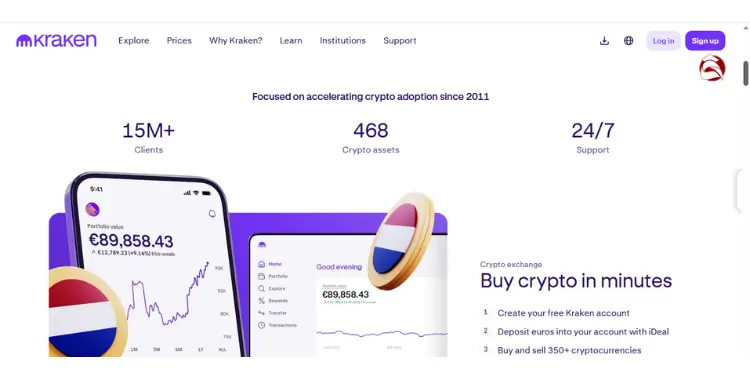
Kraken is a well-established cryptocurrency exchange known for its strong security measures and regulatory compliance. It offers a range of cryptocurrencies and trading options, catering to both beginners and experienced traders. Kraken’s focus on security and transparency makes it a reliable choice for users seeking a trustworthy crypto platform to buy or sell digital assets. It’s been rated among the best cryptocurrency exchanges.
“Discover More:
How to choose crypto exchange 2025
Selecting the ideal crypto platform requires careful consideration of multiple factors to ensure it aligns with your trading needs and security preferences.

- Assess your trading experience level and determine if you need beginner-friendly or advanced features
- Prioritize security measures including two-factor authentication, cold storage, and regulatory compliance
- Compare fee structures across exchanges including trading fees, deposit/withdrawal costs, and discounts
- Evaluate the selection of available cryptocurrencies and trading pairs
- Test the user interface and mobile app functionality through demo accounts when available
- Research customer support quality and response times
- Consider additional features like staking, lending, or educational resources
- Read user reviews and check the exchange’s reputation in the crypto community
- Verify deposit and withdrawal methods supported in your region
- Start with small amounts to test the platform before committing significant funds
Leading crypto exchanges implement multi-layered security including multi-factor authentication, cold storage for the majority of funds, withdrawal whitelisting, automated fraud detection, and regular third-party security audits to protect user assets and maintain regulatory compliance. Ref.: “Chainup. (2025). Crypto Exchange Security: Essential Features & Best Practices. Chainup Blog.” [!]





